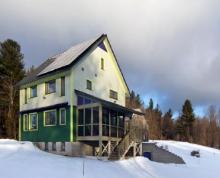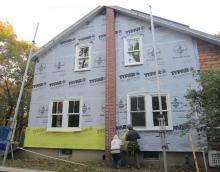Single family
Home Performance Insights from Big Data at NEST
How We Sleep at Night - Energy Metrics and Decision Making in Residential Design
When You Come to a Fork, Take It. Residential Choices and Performance
Widening the Circle in High Performance Residential Design
On Eggshells: Residential Retrofits in Tricky Situations
BQDM: Retrofitting for Reliability
The Future of Homebuilding Can't Wait: Making Sustainable, Low Energy Dwellings the Norm
It is said that homebuilding can look back at 300 years of history unimpeded by progress. It’s a bit of an exaggeration, but the energy-sucking, defect prone truth is unacceptable. Homeowners, society, and even the health of our planet have been underserved by the quality standard of our homes. As the vicious cycle of climate change accelerates, we must achieve a home quality paradigm shift now. That will mean thinking differently, acting differently, and doing differently.
Speaker: Tedd Benson, Bensonwood & Unity Homes
Tuesday Workshop - Introduction to Building Science and Diagnostics
This overview of residential energy efficiency is appropriate for future auditors, would-be retrofitters, and anyone else who lives in a house. It starts with the basics of heat, air and moisture flow. Various insulation and air sealing materials are discussed. Heating fuels, heating systems, and hot water systems are compared. Common building performance problems and their solutions are outlined. There is a brief description of blower door testing and related diagnostics, along with suggestions for prioritizing recommendations.



